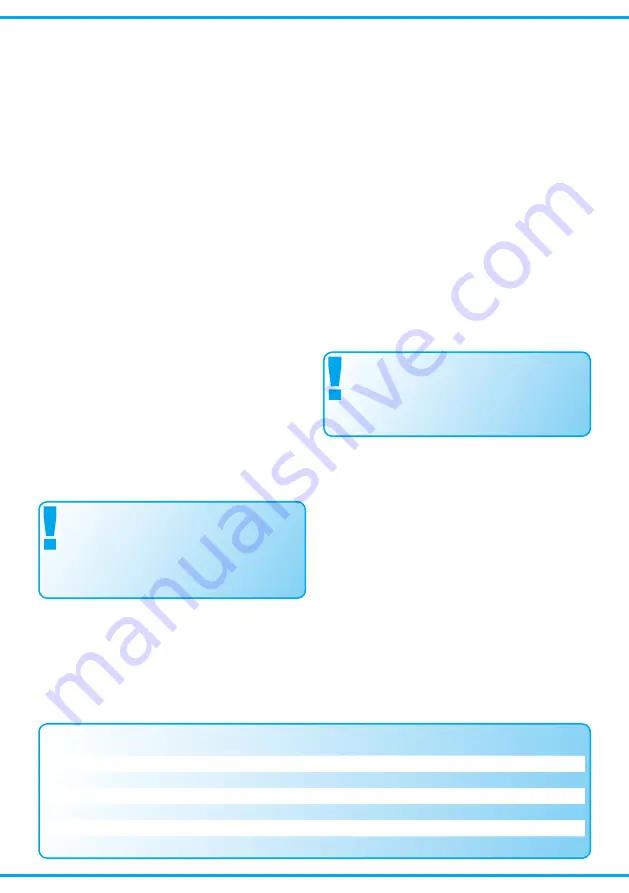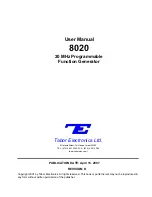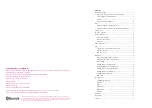
4
Rückmeldung mit RailCom
RailCom ist ein Protokoll zur bi-direktionalen Kommunika
-
tion in digitalen Modellbahnanlagen, die im DCC-Format
gesteuert werden. Es ermöglicht z. B. die Rückmeldung
der Adresse und der CV-Einstellungen von den Decodern
zur Digitalzentrale oder zu speziellen Empfängerbaustei
-
nen (Detektoren). Die Decoder müssen dafür ausgelegt
sein, die sogenannten RailCom-Messages zu senden.
Der Funktionsdecoder Basic hat einen speziellen Rail
-
Com-Speicherbereich, aus dem (fortlaufend) die (Basis-,
erweiterte oder Consist-) Adresse an die Detektoren ge
-
sendet werden (sogenanntes RailCom Broadcast Data
-
gramm) und aus dem auf einen entsprechenden DCC-
CV-Auslesebefehl hin eine CV-Meldung übermittelt wird.
Der Funktionsdecoder Basic kann als RailCom-fähiger
Funktionsdecoder mit eigener Adresse eingesetzt wer
-
den oder zusätzlich zu einem (nicht RailCom-fähigen)
Lok- oder Funktionsdecoder für das DCC- oder Motorola-
Format eingebaut werden. Er dient dann als RailCom-
Sender (und ggf. zum Schalten zusätzlicher Funktionen).
Nachdem die Einstellungen des (nicht RailCom-fähigen)
Decoders im RailCom-Speicherbereich des Funktionsde-
coder Basic übernommen wurden, können sie als Rail
-
Com-Messages versendet werden.
Das Versenden von RailCom-Messages ist nur in Anla
-
gen möglich, in denen ein DCC-Signal an den Schienen
anliegt. Daher ist der Einsatz des Funktionsdecoders Ba
-
sic als RailCom-Sender in Kombination mit einem Moto
-
rola-Decoder in einer reinen Motorola-Umgebung nicht
möglich, sondern nur dann, wenn mindestens ein belie
-
biger anderer Decoder auf der Anlage im DCC-Format
angesteuert wird.
4. Einbau und Anschluss
Prüfen Sie vor dem Einbau des Decoders, ob der
maximale Gesamtstrom der Verbraucher unter
-
halb des maximal zulässigen Wertes von 100 mA
je Ausgang liegt. Liegt der Wert oberhalb von 100
mA je Ausgang, ist dieser Decoder nicht für den
Einbau in die Lok geeignet. Er würde bei Inbe-
triebnahme zerstört.
Ein hilfreiches Zubehör für den Einbau von Lokdecodern
ist das
Viessmann
Lokdecoder-Einbauset (Art. 6819). Es
enthält Klebepads, Schrumpfschlauchstücke, passende
Kabel, Lötzinn und eine Lötanleitung.
Einbau in das Fahrzeug
Beachten Sie unbedingt die Belegung der Anschlüsse
(Tabelle unten) und den Anschlussplan Abbildung 1.
ory area, from which (continuously) the (basic, extended
or consist) address is sent to the detectors (so-called
RailCom broadcast datagramm) and from which a CV
message can be transferred after a DCC CV read-out
command.
The function decoder basic can be used as a function de
-
coder compatible to RailCom with an address of it´s own
or it can be mounted in addition to a DCC or Motorola
locomotive or function decoder that is not compatible to
RailCom. In this case it serves as a RailCom transmitter
(should the occasion arise to switch additional functions).
After taking over the settings of the non compatible de
-
coder into the memory area of the function decoder basic
they can be sent as RailCom messages.
Sending RailCom messages is only possible in layouts
with a DCC signal on the rails. That is the reason why is
not possible to use the function decoder basic as a Rail
-
Com transmitter in combination with a Motorola decoder
in a pure Motorola environment, but only when at least
one other locomotive or function decoder on the layout is
controlled in DCC format.
4. Mounting and Connections
Before mounting the decoder check if the maxi-
mum current on-load is below the maximum per
-
missible value of 100 mA for each output. If it is
above 100 mA for each output, the decoder is not
suitable for mounting in this locomotive. It would
be damaged when put into operation.
An useful accessory for the mounting of loco decoders is
the
Viessmann
installation set for loco decoders (#6819).
It contains all materials for trouble free installation of de
-
coders into model engines as e. g. wires, shrink sleeves,
adhesive pads etc.
Mounting
Notice the connection table below and follow the connec
-
tion diagram shown in figure 1.
►
Open the vehicle´s housing. Locate the position for
the module.
►
Solder the connections from the rail current collectors
at the points X4 and X5. Assign the connections as
follows:
X4: left rail current collector
(seen in direction of motion)
X5: right rail current collector
(seen in direction of motion)
Anschluss
connector
Farbe
Funktion
Colour
Function
X 1
orange
Funktionsausgang 1 (max. 100 mA)
orange
function output (max. 100 mA)
X 2
orange
Funktionsausgang 2 (max. 100 mA)
orange
function output (max. 100 mA)
X 3
orange
Anschluss für Stützkondensator
orange
Connector for smoothing capacitor
X 4
schwarz Stromabnehmer (linke Schiene)
black
left rail current collector
X 5
rot
Stromabnehmer (rechte Schiene)
red
right rail current collector
X 6
orange
gemeinsamer Rückleiter (COM)
orange
return conductor (COM)


































